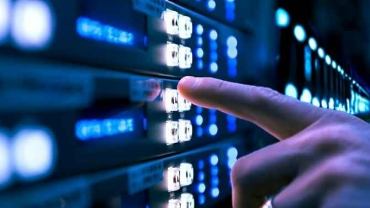
Next generation of digital ecosystems require 5G and edge computing
Emerging digital ecosystems can deliver unseen experiences for end-users and present new opportunities for the stakeholders involved. Today’s digital solutions support vertically deep business models, with domain-specific infrastructures and capabilities. Next-gen digital ecosystems allow for the combination of vertically deep and horizontally diverse capabilities that make use of seamless access to data from massive IoT fleets and data processing near the source(s). These digital ecosystems can be found around different use cases across verticals such as:
Hybrid sporting events delivered to remote audiences in the metaverse, a digital twin of a complete railway system, an interconnected vehicle fleet, connected logistics hubs (e.g., airports, commercial harbors), hospitals, manufacturing shop floors with unmanned autonomous vehicles, and many more. Here, we will demonstrate how these use cases deliver value to all involved stakeholders and provide a sense of the capabilities and concepts required to deliver them, e.g. low latency mobile communication, near-source data processing, digital twins.
4 digital ecosystem use cases: Smart stadium, railway, traffic management, digital airport
Smart Stadiums
Smart stadiums are venues that leverage technology for innovative visitor experiences and improved operations. They allow for more accessible and immersive experiences for on-site and remote audiences as well as new levels of insights and opportunities to commercial and operations partners. Audiences can visualise players’ performances through virtual and predictive views, additional analyses, overlaid simulations, and comparative scenes among other features. 5G and edge technology enable capturing and blending multi-dimensional and volumetric data at millisecond speeds for AR/VR experiences.
What value add does it offer?
Smart stadiums deliver differentiated experiences and new opportunities to a number of stakeholders:
- Fans (e.g., immersive (remote) experiences, enhanced accessibility)
- Teams and Leagues (e.g., extended fan interactions, advanced analytics)
- Sponsors (e.g., larger audiences, targeted ads)
- Venue Operators (e.g., intelligent ops, data monetization)
- Retail partners (e.g., new channels and insights)
How do we get there?
Technology and innovation underpin the “modern game” in most sports already (e.g., VAR, 3D replays, crowd monitoring, goal-line technology). Moving forward, innovation will continue to evolve the genre and stadiums will play a key part in delivering these experiences leveraging new capabilities:
- Digital twins of the stadium, the gameplay and the visitors - based on multitude of sensor input
- Low-latency and high-capacity networks & compute infrastructures to operate the digital twins
- Automated media production & scene rendering for augmented and virtual reality
- On-site D&A platforms and infrastructure
Railway System Digital Twins
A digital twin of the railway system is a physically accurate (to the extent necessary), effectively indistinguishable digital counterpart of the entire system.
The objective is to create a more powerful railway system, in which train routing through the network is optimized with minimal headway between individual trains and minimal overall delays.
What value add does it offer?
The benefits of building and deploying a digital twin of a railway system span across multiple stakeholders, e.g.:
- Railway company (e.g., increased efficiency and plannability, reduced environmental impact, improved customer sentiment, optimized operations)
- Passengers (e.g., improved punctuality, fewer disturbances)
- Cargo customers (e.g., better reliability and punctuality)
- Government (e.g., improved funding efficiency)
How do we get there?
Foundational capabilities are already being used to deliver automated and digitized railway services to a certain extent. These capabilities will need to be built upon with innovations in order to build digitalt wins:
- More IoT sensors (e.g., on vehicles, rails, platforms)
- Low-latency & high-capacity networks
- Digital twin data structures capturing multiple domains
- 3D pipelines connected to computer-aided design datasets with 3D maps & simulation tools
- Artificial intelligence (e.g., to conduct analytics and planning)
Any questions?
Contact our expert
Interconnected vehicle fleet
An interconnected vehicle fleet intelligently manages traffic across the road network. The objective is to optimize traffic flow and enable seamless adaptation to dynamic scenarios (e.g., congestions) while minimizing safety risks.
What value add does it offer?
An interconnected vehicle fleet benefits all road traffic stakeholders:
- Passengers (e.g., increased safety, optimized commute times, improved energy efficiency and environmental impact)
- Government (e.g., efficient traffic flow, lower risk of accidents, environmental protection)
- Vehicle manufacturers (e.g., context awareness of vehicle improving its USP in safety and driving experience)
How do we get there?
The foundation for an interconnected vehicle fleet has been laid through the continuous innovation of sensors, data collection, and smart technologies in vehicles and roadside traffic management systems. In order to drive the evolution forward several key technologies will be needed:
- V2X connectivity for data exchange between cars / infrastructure
- Advanced driver assistance systems (ADAS) in the vehicles
- IoT & AI-enabled traffic systems
- Low-latency and high-capacity networks, data transmission, and compute (edge compute)
- Dynamic simulations (e.g., via digital twins of the traffic scene)
Digital airport
The Digital Airport is based on truly integrated digital operations with the objective to optimise operational efficiency, improve passenger experience and extract more revenue opportunities from passenger operations. Airports increasingly need to manage strains caused by airport traffic growth in order to reduce operational and safety risks, improve operations planning, and ensure operations timeliness. The Digital Airport relies on a digital twin to capture all asset movements, and to predict operational needs, and support timely turn around at the gates. In addition, passenger experience can be improved with a myriad of initiatives leveraging AI, monitoring, luggage routing error detection, etc. Finally, airports get a large share of their revenues from retail operations, which can largely benefit from better analytics.
What value add does it offer?
Digital Airports delivers better value to a number of stakeholders:
- Airports (e.g., intelligent ops, improved safety, lower customs costs)
- Airlines (e.g., faster aircraft gate turn-around, improved safety around the aircraft)
- Passengers (e.g., timely experiences, enhanced accessibility)
- Maintenance operators (e.g., assisted maintenance, predictive maintenance)
- Retail operators (e.g., insights, targeted ads)
How do we get there?
Airports have been cautiously embracing new technology, as safety drives all other considerations. Autonomous carts on the apron, autonomous cleaners, automated parts stores, AI powered luggage screening have appeared at airports, although mostly as trials.
- Digital twins of apron operations, with all large and small moving assets tracked - based on multitude of sensor input
- Low-latency and high-capacity networks & compute infrastructures to operate the digital twins
- Airport data sandbox services
- Consolidation of all airport applications in the Cloud
- Dynamic simulations of Aircraft operations at the gate (e.g., via digital twins of all moving assets around the aircraft)










